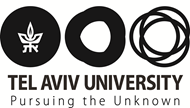Publish Open Access
TAU researchers publish Open Access for free!
Tel- Aviv University's researchers can publish Open Access articles in journals of some of the world's leading publishers in the fields of exact sciences and engineering, with no charge or with reduced payment, thanks to agreements between these publishers and your library.
Search this box for journals included in our agreements
*Please note: This search does not include journals published by the American Chemical Society (ACS).
The list of ACS journals covered by the institutional agreement is available here.
List of publishers and journals included in the agreements
AAAS - American Association for the Advancement of Science - 15% discount for publishing in the journal "Science Advances".
American Chemical Society - No Fee - Journals included in the agreement
Association for Computing Machinery (ACM) - No Fee - Journals included in the agreement
American Institute of Physics - No Fee - Journals included in the agreement
Cambridge University Press - No Fee - Journals included in the agreement
Elsevier - No Fee - Journals included in the agreement
Elsevier - Gold - 10% Discount - Journals included in the agreement
Institute of Physics - No Fee - Journals included in the agreement
Oxford University Press - Hybrid - No Fee - Journals included in the agreement
Oxford University Press - Gold - 15% discount for publishing - Journals included in the agreement Additional charges are not included in the agreement.
The Royal Society - No Fee - Journals included in the agreement
Royal Society of Chemistry - No Fee - Journals included in the agreement
Sage – A discounted rate of 200 GBP - Journals included in the agreement
Springer - No Fee - Hybrid - Journals included in the agreement
Tel Aviv University has exceeded the annual quota for Open Access articles with Springer.
Therefore no articles will be approved between 5.11.25 and 31.12.25.
During this period, you can still publish Open Access,
but the payment will not be covered under the institutional agreement.
We will resume approving articles for free publication on 1.1.2026
Taylor and Francis – No Fee - Journals included in the agreement
Wiley - No Fee - Hybrid Journals included in the agreement
Benefits of publishing Open Access
- Increased visibility of research outputs, leading to increased impact and increased chances to be cited and shared.
- Researchers from anywhere on earth can read your research without access barriers.
- Many funding bodies require that works produced by grant holders will be made Open Access – now you can comply with this policy without paying any publishing fees.
How to publish Open Access for free?
The submission process may vary from one publisher to another. However, there are three significant steps that we would like to stress:
- During submission, use your Institutional email address, i.e., researcher name@tauex.tau.ac.il
- Declare your affiliation with Tel Aviv University.
- Submit only to the journals of the publishers that are included in the agreements with the library – see the following list:
For additional information, please contact the Acquisition & Electronic Resources Dept.
Email: sveta@tauex.tau.ac.il

